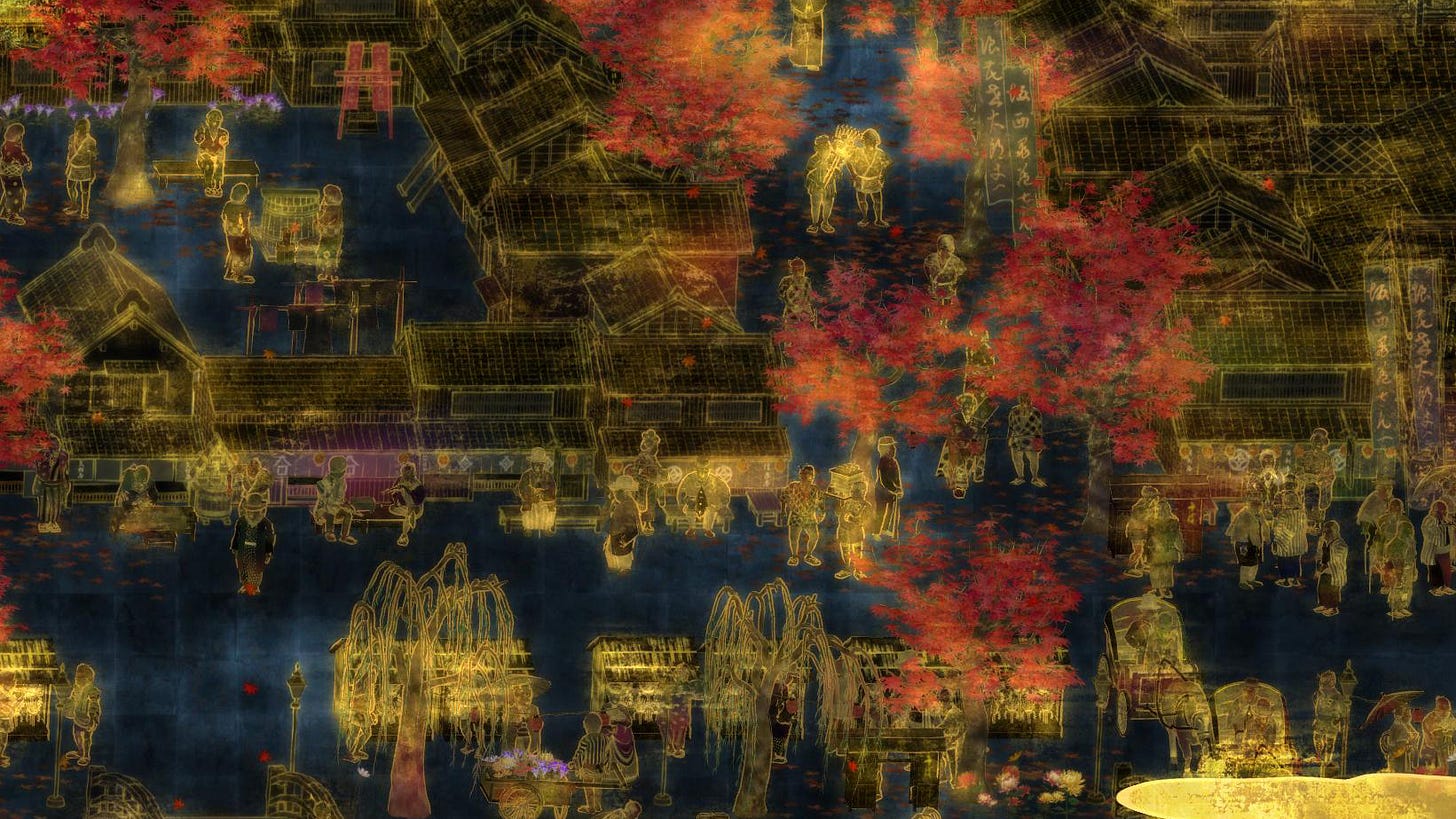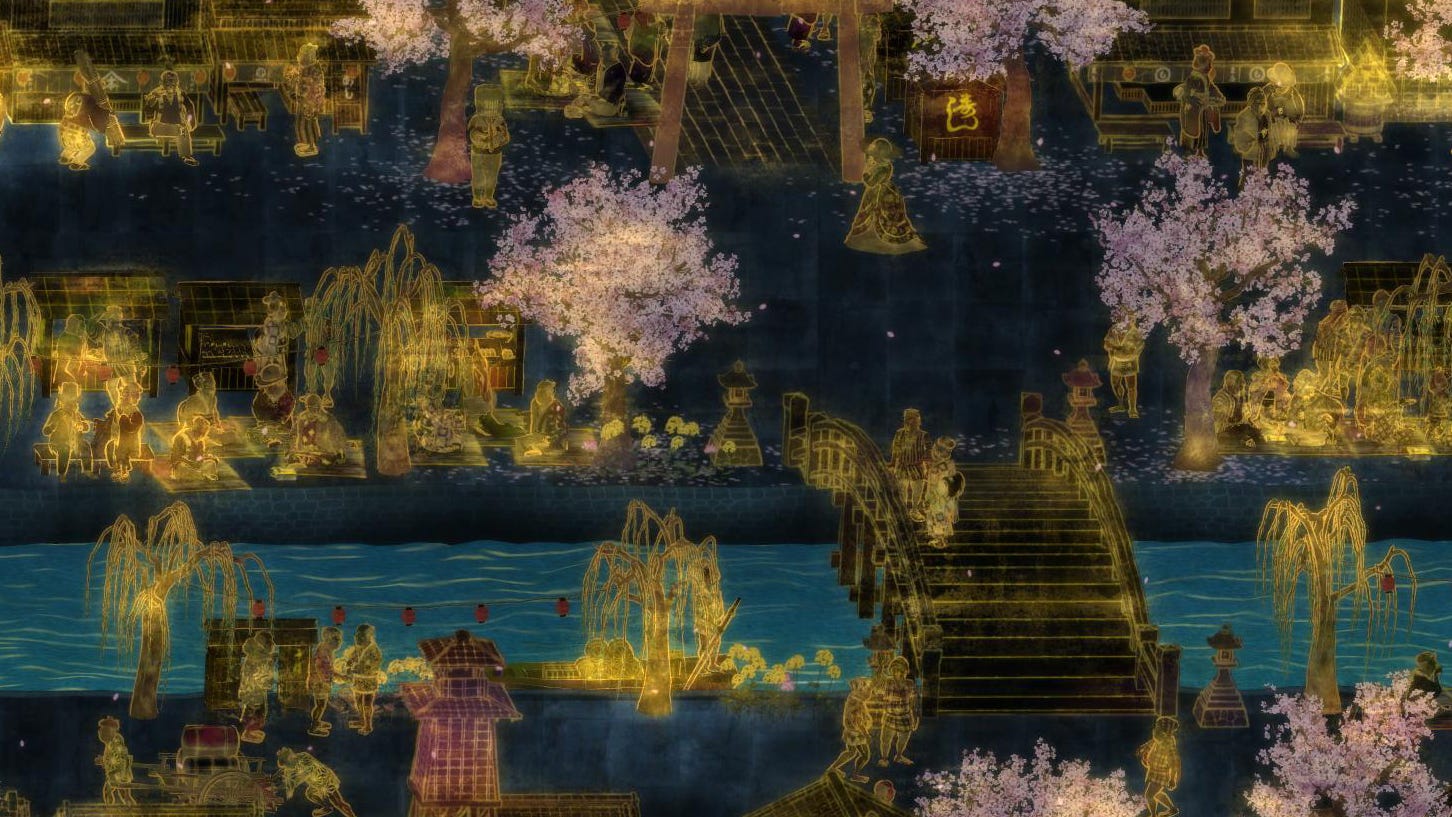The World of Irreversible Change
It is dynamic and transformative beyond the means of traditional art.
Years ago, an older person warned me, ‘The problem with art is the more familiar you become with it, the less often you experience the shock of the original’. Regardless of the truth of this statement, I recently experienced such a shock when I stumbled upon a highly original digital artwork.
I came across the artwork at the Centro de Arte Hortensia Herrero, a new contemporary art gallery in Valencia, Spain. The gallery is the creation of Hortensia Herrero, a Valencia-born businesswoman and billionaire who is the vice-president of the ubiquitous Spanish supermarket Mercadona. The newly renovated Valeriola Palace, in the heart of Valencia’s Old Town, is now home to her extensive contemporary art collection.
The gallery contains works by celebrated artists such as Andreas Gursky, Anselm Kiefer, Anish Kapoor, and David Hockney. There are also commissioned original works, such as stained glass windows from Shaun Skully and an installation by Mat Collishaw, amongst other artists. Yet it was one work, The World of Irreversible Change, from the art collective teamLab, that stuck with me.
The digital artwork comprises six panels displaying an animated, ever-changing scene from an imaginary time and location, but which clearly resembles a centuries-old East Asian town. The dynamic and non-linear scene feels alive, with boats, carts, salespeople, and citizens wandering about their lives amid the changing scenery of nature. Projected in a subdued manner, it avoids the harsh brightness of screens. It’s not perfect, as I saw a man walk through a cart, but it is impressive.
The creators describe the artwork as follows.
The world of the artwork changes with the real time of its location. Morning arrives in the artwork with the sunrise in the real world, and when the sun sets, evening begins. If it rains in the real world of the work’s location, it rains in the world of the artwork, and the flora that grow in the artwork change every day with each passing season. The people’s lives also change continuously depending on the time of day and weather of the real world, and the festivals and events that are celebrated change with the seasons. Various stories take place every day, and the lives of people continue eternally.
I found it inherently beautiful. It resembles a traditional Chinese or Japanese artwork, as it lacks a strong sense of perspective which liberates you from a dominant focal point. The curation revealed an added conceptual dimension: the work was not simply dynamic, but interactive; it existed in a fragile state, as viewers could, by interacting with the citizens of this land, provoke them to war.
The actions of viewers influence the world of the artwork. The people in the artwork respond when a viewer touches them, but if the interaction is limited, they return to their daily lives. If the interaction is continuous, however, fights break out amongst the people in the artwork that are near to each other, leading to deaths. The fighting spreads throughout the city, which becomes engulfed in flames that last for over a year. As the city burns to the ground, the people in the artwork eventually die out.

The aftermath of a war would lead to what could be described as a Chernobyl-like rewilding.
In the ruined city where not a single person remains, the seasons still pass and the sun rises and sets with the time of the real world. After a few months, new flora begin to grow in the burnt ruins of the city. The flora grow, bloom, and scatter repeatedly, changing daily with the real passage of time. The flowers and plants grow deeply throughout a long period, and the flowers change throughout every year, continuing in perpetuity.
One final interesting framing of the work came from its owner, Hortensia Herrero. I asked if people interacted with the artwork, but was told, ‘No, interaction was not allowed’. I find this somewhat understandable, as the war is irreversible, and the artwork cannot be restored. Audiences would inevitably provoke a war for the novelty of seeing the artwork change.

I cannot speak for the lasting value of The World of Irreversible Change. I saw it only once, it would need to be observed for a long time to reach a meaningful judgement. Yet what I found exciting was that it avoided a common flaw of digital art, to imitate what can be done better by traditional means. This was dynamic and transformative beyond the means of traditional art, exploring the strengths of digital art’s new possibilities.
I could see how this artwork could be considered a gimmick, but I was genuinely struck by its inherent beauty before encountering its conceptual aspect. One thing is for sure: I had never seen anything like it, and this experience has inspired me to think of new possibilities for digital art.





When I first started reading I thought eh, so what? But then when you mention that the work changes in real time, I thought, oh. Then when you said the work is interactive I mused, viewers will try to provoke destruction, just to see what happens. When you confirmed that this is why interactions are not permitted, I realized the true existential value of the work.
Eye opening, Dom. Thanks!